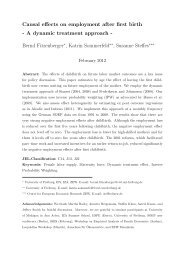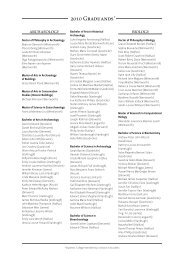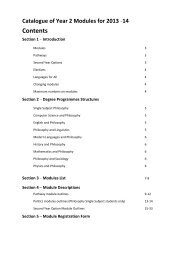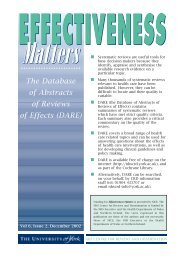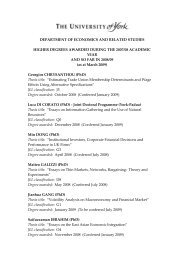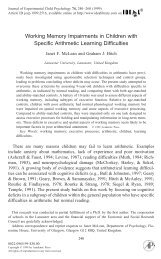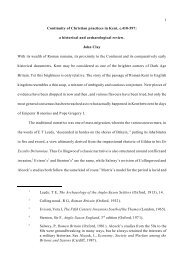GeloriniPhD (PDF , 6973kb) - University of York
GeloriniPhD (PDF , 6973kb) - University of York
GeloriniPhD (PDF , 6973kb) - University of York
Create successful ePaper yourself
Turn your PDF publications into a flip-book with our unique Google optimized e-Paper software.
. 21 .<br />
INTRODUCTION<br />
Atlantic Ocean during the dry season in July-August, when the CAB moves eastwards over the Plateau (Fig. ii) (McGregor<br />
and Nieuwolt, 1998). Whereas the long rains are more abundant, the short rains are particularly variable (Conway,<br />
2002; Hastenrath, 2007). Moreover, circulation anomalies evoked by a powerful zonal–vertical circulation cell along the<br />
Indian Ocean equator, may severely affect the magnitude <strong>of</strong> equatorial surface westerlies during the short rains, leading<br />
to disastrous regional floods or droughts (Han et al., 2010; Hastenrath et al., 2010). The strong relationship between<br />
monthly and seasonal rainfall patterns in East Africa and phases <strong>of</strong> ENSO also amplifies interannual rainfall variability, in<br />
which ENSO warm events tend to be associated with above-average rainfall (i.e. El Niño years, e.g., 1997-1998) and ENSO<br />
cold events with below-average rainfall (i.e. La Niña years, e.g., 1999-2000) during the short rainy season (Nicholson,<br />
1996; Nicholson and Kim, 1997; Indeje et al., 2000; Mutai and Ward, 2000). Mean annual rainfall varies from ~200-400<br />
mmyr -1 in the most arid regions (e.g., northeastern Kenya), and exceeds 1200 mmyr -1 in the most humid regions (e.g.,<br />
Uganda). However, seasonal inter-annual rainfall patterns may differ distinctly within short distances (on the order <strong>of</strong><br />
tens <strong>of</strong> kilometers) depending on local topography (Nicholson, 1996); for instance, mountainous areas such as Mont<br />
Elgon in Uganda, and large lake areas such as Lake Victoria experience highest rainfall, i.e. ~2500 mmyr -1 . Because <strong>of</strong> its<br />
rich topography (e.g., mountains, valleys and lakes) and land cover, mean annual temperature in East Africa varies from<br />
10-15 °C (T min ) to 21-26 °C (T max ). Although there seems to be a general warming trend since the 1940s, temperature close<br />
to the coast and major inland lakes are gradually decreasing (King’uyu et al., 2000). Recently, evidence <strong>of</strong> accelerating<br />
T min rise has also pinpointed significant human land development, possibly creating locally produced aerosols, as an<br />
important temperature driver in East Africa (Christy et al., 2009).<br />
a b<br />
Fig. ii. General patterns <strong>of</strong> precipitation, trade winds, pressure and convergence over Africa during (a)<br />
boreal winter (northeast monsoon) and (b) boreal winter (southeast monsoon), with special reference<br />
to the East African region (CAB positions based on Nicholson, 1996; map modified from United<br />
Nations Environment Programme (UNEP), 2007. (http://gridnairobi.unep.org/chm/EAFDocuments/<br />
Maps_and_Data/maps_thumbnails/).



